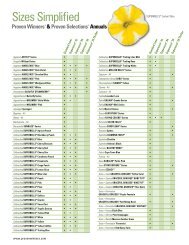

A better understanding of the inflammatory response in different populations can contribute to the implementation of therapeutic and preventive approaches. Patients with COVID-19 residing at high-altitude tend to have higher levels of inflammatory cytokines compared to patients living at sea level, particularly IL-6 and TNF-α. The levels of IL-2, IL-10 and IFN-γ were not significantly different in the study groups. Regarding TNF-α, patients from Lima had a mean level of 25.9 pg/ml (healthy) and 61.6 pg/ml (COVID-19), meanwhile, patients from Huaraz had levels of 89.0 pg/ml (healthy) and 120.6 pg/ml (COVID-19). In the case of IL-6, patients from Lima had a mean level of 16.2 pg/ml (healthy) and 48.3 pg/ml (COVID-19), meanwhile, patients from Huaraz had levels of 67.3 pg/ml (healthy) and 97.9 pg/ml (COVID-19). The mean levels of IL-6 (p < 0.03) and TNF-α (p < 0.01) were significantly different among the study groups. Five important proinflammatory cytokines were measured including: IL-6, IL-2, IL-10, IFN- γ and TNF-α using ELISA assays.Ī total of 35 COVID-19 patients and 10 healthy subjects were recruited from each study site. The difference in the inflammatory response against SARS-CoV-2 infection among people living at different altitudes is a variable not yet studied.Ī descriptive cross-sectional study was performed in two Peruvian cities at different altitudes for comparison: Lima and Huaraz. This renders the patient unresponsive to an inflammatory process, facilitating periodontal loss.Īt the end of 2019, a novel coronavirus denominated SARS-CoV-2 rapidly spread through the world causing the pandemic coronavirus disease known as COVID-19.

Recent studies have shown the presence of the RAS system in periodontal sites where osteoblasts, fibroblasts, and osteoclasts are involved in bone remodelling, suggesting that the role of ACE2 might have a fundamental function in the under-or overexpression of cytokines such as interleukin-6 (IL-6), interleukin-7 (IL-7), tumour necrosis factor alpha (TNF-α), interleukin-2 (IL-2), interleukin-1 beta (IL-1β), monocyte chemoattractant protein-1 (MCP-1), and transforming growth factor-beta (TGF-β), associated with a periodontal disorder, mainly during coinfection with SARS-CoV-2, where ACE2 is underexpressed and cannot form the ACE2-Ang1-7-MasR axis. In contrast, the RAS axis composed of ACE2, Ang1-7, and Mas receptor (MasR) exerts the opposite effect concerning the inflammatory response and tissue fibrosis. The classical RAS axis, formed by ACE, angiotensin II (Ang II), and angiotensin receptor type 1 (AT1), activates several cell functions and molecular signalling pathways related to tissue injury and inflammation. ACE2 is an enzyme involved in the renin-angiotensin system (RAS), whose key role is to regulate and counter angiotensin-converting enzyme (ACE), reducing the amount of angiotensin II and increasing angiotensin 1-7 (Ang1-7), making it a promising drug target for treating cardiovascular diseases. The main focus of a consistent number of studies has been the role of angiotensin-converting enzyme 2 (ACE2) in binding the virus and its role in expression of the inflammatory response after transmission. SARS-CoV-2 propagation in the world has led to rapid growth and an acceleration in the discoveries and publications of various interests.


 0 kommentar(er)
0 kommentar(er)
